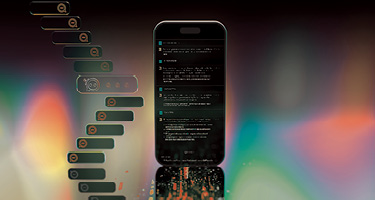It may be coincidence or luck of the draw, but after stepping into the general counsel role in three different situations, I was struck by the similarities as I inherited existing piles of pending lawsuits and brewing disputes. After reviewing matters bigger than a breadbox in terms of dollars (internal or external sensitivity), I noticed that almost all fell into one of three buckets, which I label the “good,” the “bad,” and the “unclear.” We also learned that each category—and our companies’ fortunes—regularly improved by taking a different approach to dispute management. With the added perspective of years spent mediating disputes of these types, I can attest to the value of early efforts to diagnose and mediate all disputes, as well as the adverse consequences of not doing so.
Let me first explain my terms. “Good” disputes were those that made perfect sense in terms of the litigation strategy adopted, our apparent prospects, and the alternatives that existed (or didn’t). “Bad” disputes were the opposite: disputes with dubious prospects and much expense and distraction ahead, particularly when juxtaposed against the apparent alternatives to end the dispute. Finally, the “unclear” disputes were just that: matters where we didn’t really know enough to confidentially handicap our prospects or the available alternatives.
What our experiment proved was that each of these categories of disputes benefited from a disciplined early dispute resolution (EDR) program, combining active dialogue with our adversaries and early mediation efforts if the direct dialogue didn’t fully do the trick. The “good” cases could be leveraged early to educate the other side, reset expectations, and drive the best resolution without further ado. The “bad” cases, if properly diagnosed, could be compromised early on before bad became much worse. Additionally, active direct dialogue, followed by mediation if needed, provided the clarity needed to adequately diagnose the “unclear” category.
So we tinkered. Rather than sticking with a traditional litigation course with substantial formal motion practice and extended discovery, followed by later stage efforts to mediate on or near the courthouse steps, we designed and employed an EDR program consistently to all new and pending disputes. For clarity’s sake, “disputes” included not just filed lawsuits but also matters threatened, which was learned from years of observing that it is rarely too early to intercept a lawsuit in the making, regardless of whether we sat in the plaintiff or defendant seat.
As we began crafting our EDR program, we also developed benchmarks to measure it against the traditional litigation model. The ultimate benchmark was the bottom line in terms of direct and indirect cost to the organization. To ruin the surprise a bit, the results exceeded our expectations, and in turn helped us gain support for additional resources and initiatives. From those efforts, we developed the following seven principles of a successful EDR program.
1. Measure everything you can.
Any new program or initiative should be measured against meaningful metrics, yet some companies use benchmarks that may present an incomplete or misleading picture of success. In the quest for reduced legal spending, for example, some organizations seize on one or more individual criteria of savings, such as the average hourly rate paid to outside counsel, the total number of in-house headcount, or the total number of retained outside law firms. With a “less is better” imperative, those metrics can produce false positives as to net savings when everything is counted, including the total number of hours billed, penalties, judgments, and settlement payments.
As an alternative, we developed a total delivered cost (TDC) per matter by category of dispute matter—for example, individual employment claims, class claims, copyright and trademark claims, and ADA claims. The TDC metric counted everything it reasonably could, in terms of outside legal expense, an allocable portion of our in-house legal team’s cost, and all monies paid in judgment, settlement, or penalties of any type. Indirect costs—such as the loss of time, company personnel, and resources—were not explicitly measured but were certainly part of the discussion. Yet, as it turned out, those indirect costs were not even needed to make the case that a robust EDR program greatly reduced the company’s cost per matter when compared to its prior method of litigating.
2. Impose a one-week rule.
Delays in assessment and communication with the other side often produce their own false positives in the handicapping process, as things often look better until you kick the tires hard. Individuals and groups circle together and agree with each other too easily on why we are right and the other side is wrong. To avoid this pattern of positions hardening around an early and incomplete assessment, we tasked ourselves with reporting back quickly as to what we confidently knew, didn’t know, and what additional information could really help—all within one week. The mantra was to be prepared to brief the CEO or the board, avoiding firm pronouncements without the facts or investigation to truly back them up. In most cases, neither the CEO nor the board got involved early on, but this process institutionalized rigorous testing and retesting and flagged core areas for follow up. If that preliminary read raised any doubts, we began surfacing them internally before positions hardened further and other options evaporated.
Of course, certain matters need more than seven days for a preliminary assessment to be valuable. But we treated those as the extreme exception rather than an easy out. The case had to be made as to why we couldn’t complete this preliminary assessment. Even for large matters, there was always valuable work to do right away to clear up the unclear and confirm strengths and weaknesses.
3. Talk to the other side early, directly, and frequently.
While this may sound obvious, the trend in litigation practice has been away from direct conversation—meaning face-to-face or telephonic exchanges—in favor of position statements reflected in letters, emails, and pleadings. But those formal communications are not conversations, and they suffer from the one-sidedness they are built upon. Rather, we insisted upon direct conversations, through our in-house lawyers and our outside counsel, with the other side. We pursued a substantive exchange as to key facts and what they suggested: We would like to better understand your position and share preliminary information that may clarify or correct some initial impressions on both sides. That’s all it normally takes to get started. And while it might take more than one conversation, the effort consistently paid off.
4. Prepare for resistance on your side and misunderstanding from the other side.
Anticipate and address concerns from your side about early and substantive discussions with the other side. Keep in mind that the other side is usually blamed for the problem in the first place, whether you are the plaintiff or the defendant. To allay those concerns, focus on the benefits of learning more regardless of whether the early dialogue prompts an early settlement. Both sides are better informed as to the key facts, strengths, and weaknesses, which often prompts an informed and reasonable resolution. But even if it doesn’t, you are better prepared for the trial or arbitration that follows. Further, in most cases, the scale of the remaining dispute is no longer cluttered with expensive and distracting forays into the irrelevant and unimportant.
Engaging the other side early on may also trigger misimpressions. An adversary may assume that you are concerned about your position, and hence are starting to raise the white flag. No reason to fear, as long as you handle the conversation correctly. Indeed, the hallmark of confidence is talking directly with the adversary and explaining why you believe that you will prevail if the matter is fully adjudicated, while also asking for any information or input that may change your side’s assessment. Here, it certainly helps to explain that you routinely follow an EDR program that prompts these early and thorough exchanges. Nothing peculiar about this matter; it’s what we always do.
5. Mediate early.
While early, direct, and ongoing engagement is essential to reaching a reasonable accord, we sometimes still need help. Despite best efforts, the other side may discount you and your information because you are, well, the other side, and they blame you for the problem at hand. So we mediate, and we do so early on while the number of alternative solutions is greater (e.g., reinstatement, repair, new contracts, licenses) and the sunk costs have not yet grown into a counterweight to a reasonable accord.
Here, expect more resistance from your own side. It’s too early. We haven’t taken the entire discovery. The other side hasn’t been reasonable so far; what will be different at the mediation? Well, actually, a lot. A reputable mediator is, by definition, neutral. Hence, they won’t be tainted by the bias attributed to your side. The mediator can also help the parties negotiate informal exchanges of key information and sort out what is really unimportant, whether in a single early mediation session or a staged process that will cost everyone a small fraction of what the traditional litigation path promises. Finally, from nearly two decades serving as a mediator, I can confirm that the bad behavior of the past typically does not rear its ugly head in the course of mediation. More often, the foreshadowing of out of control clients and attorneys is tempered by the realization that a civil discourse is often essential to getting the best deal done. (For a deeper dive on overcoming client and counsel resistance to early mediation efforts, please see my prior article: “Navigating the Litigation Conversation: Confessions of a Litigator Turned General Counsel Turned Mediator.”[1])
6. Approach mediation as a conversation, not moot court.
Notice a theme here? As we all know, mediation is a consensus-driven process, unlike trials or arbitration. Nothing good happens unless everyone agrees. Focus on the virtues of mediation over traditional litigation, including (a) the opportunity to educate the other side, as well as learn things that may shift your side’s view in an off-the-record exchange; (b) the chance to persuasively advocate in mediation; and (c) the real opportunities that joint mediation sessions present.
Leave the invective and incivility at home—great advocates practice neither. To the contrary, they seize the opportunity to talk directly to counsel and client on the other side. Tell a compelling story that may resonate with the judge, jury, or arbitrator. Show the other side that you are neither the simpleton nor malcontent that you may have been described to be. Keeping in mind that we are all hardwired, clients and counsel alike, to discount bad facts and the people who share them as well as concurrently overweigh our prospects for success at trial, the mediation process allows us to break down misconceptions and reset expectations. It works best if we talk rather than vilify.
7. Define success based upon speed toward resolution rather than wins.
Wins, like perceived precedents, are often overrated. A few battles need to be fully waged, but most do not. Most disputes are not likely to recur or to prompt useful precedents. The notion that any case outcome will really dissuade others is unsupported by any empirical evidence. Indeed, a focus on wins often produces Pyrrhic victories if you prevail—and far worse if you don’t.
Rather, we assessed potential settlements based upon the realistic prospects of success and the total cost of litigating to the end, measured by direct and indirect costs. Indirect costs—loss of time, resources, and focus—unfortunately often get short shrift in the mediation conversation. However, they often have great impact on companies and individuals, generating unproductive behavior of their own. The most successful mediation preparation and sessions depend upon setting reasonable expectations based upon realistic scenarios, which all flow from active and early use of robust EDR programs.
Insight
Early Dispute Resolution Programs that Deliver
Seven Keys to Success
















